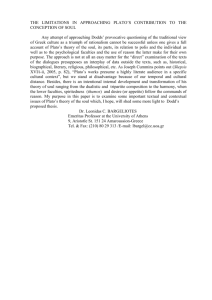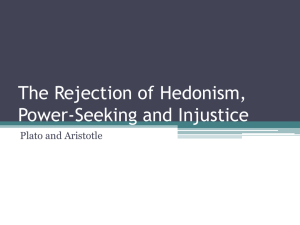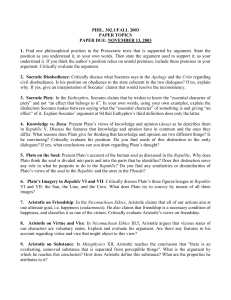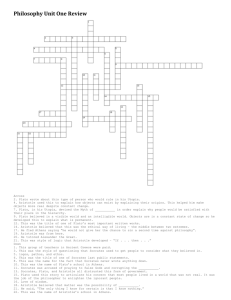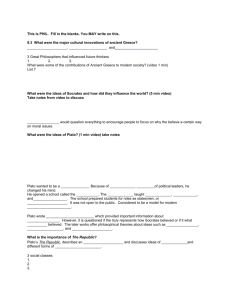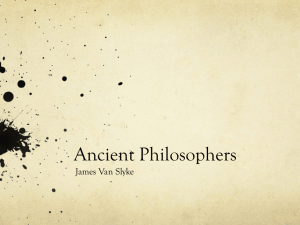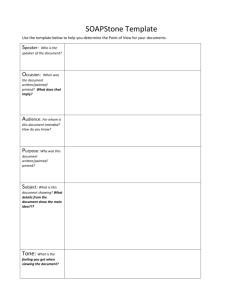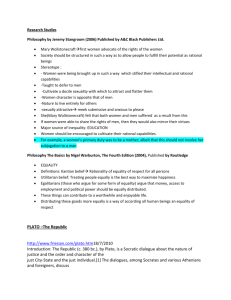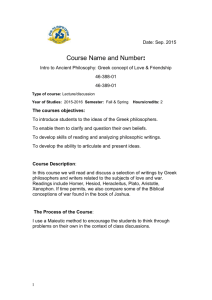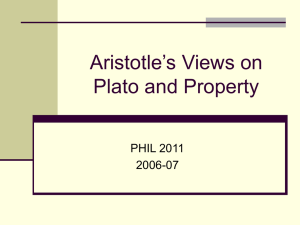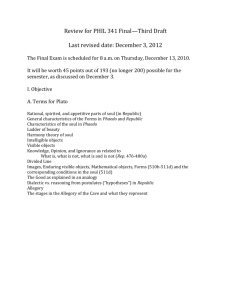Plato and Aristotle
advertisement
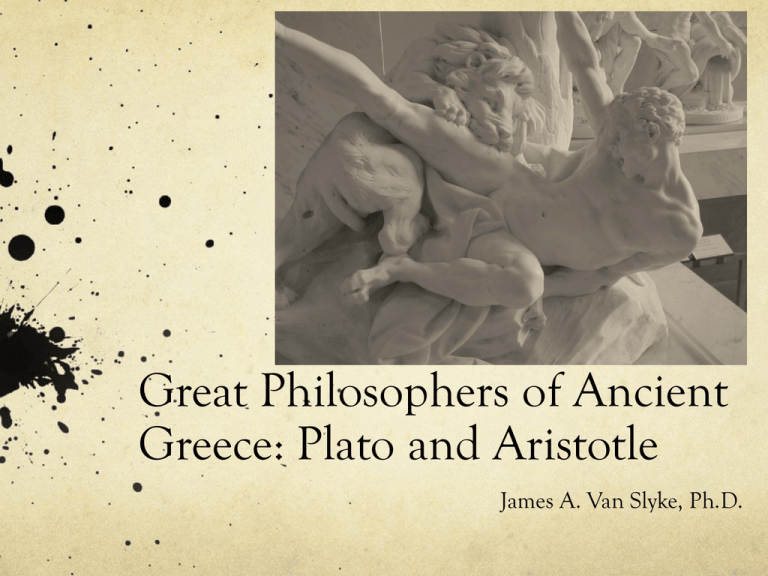
Great Philosophers of Ancient Greece: Plato and Aristotle James A. Van Slyke, Ph.D. Two Philosophers Plato (428-348 B.C.) Born into wealth and political power Rejected a political career after the death of Socrates Socrates’ student His school, The Academy, located next to his house Taught both academics and political leaders Died at the age of 81 at a wedding feast Two Philosophers Aristotle (384 -322 B.C.) Born in Macedonia 15 years after Socrates’ death In 367 B.C Aristotle at the age of 17 moved to Athens and studied at The Academy for 20 years Tutored Alexander the Great Aristotle later set up his own school, The Lyceum, outside of Athens Great library and students Many free lectures Theory or Common sense? Plato Pointing towards the sky Emphasized theoretical knowledge Clothed in red the volatile element of fire Aristotle Feet firmly on the ground Clothed in the colors of green (earth) and blue (water) Emphasized the empirical, what can be demonstrated and observed Plato’s Thought The Republic (written 375 B.C.) Sought a definition of Justice Explores several definitions Statement of the aims of The Academy Characters Socrates – Narrator Glaucon and Adeimantus Primary respondents, elder brothers of Plato Thrasymachus Sophist The Republic Definitions of Justice Objection of Thrasymachus Justice is not virtue, but foolishness Used for the interest of the powerful Self-interest is more important than morality Objections of Glaucon and Adeimantus Means to avoid punishment Gain a good reputation; social approval Plato tries to show that justice is a good to be sought for its own reward The Republic To understand justice, the philosopher must understand “the form of the good” Forms – Idea or Essence of something That which unites things into a particular category Theory of Ideas The allegory of the sun The allegory of the cave Philosopher is sent to rescue people from the cave From the world of appearance to the reality of the good The Republic Plato’s society has three classes 1. Ruling class – soldiers Selected through competition Philosopher Kings 2. Auxiliary soldiers Carried out necessary functions 3. Farmers and Artisans Gave consent to rulers Virtuous city is based on a proper division of labor The Republic Inner soul is similar to the division of labor in the city Reason Rules over the tempers and appetites Tempers Fight and punish Anger Appetite Sexual desire Hunger, thirst The Republic Justice is an individual in harmony with the three parts of the soul; discord leads to injustice A proper balance of the soul is based on the exercise of reason This leads to a just person and a just society Thus, justice or goodness is its own reward Better to fill the soul with understanding rather than simply fulfilling the appetites Justice or goodness leads to a healthy soul and a healthy life The Republic Education Imagination Poets and Drama, story Beliefs Establishing a contingent fact Mathematics Abstract numbers Geometrical proofs Dialectic (philosophical) reasoning proposes a hypothesis and tries to show that it leads to a contradiction or elenchus if successful the hypothesis is refuted Tries to reach a premise that is unquestionable Plato’s Cosmology Form of the Good Forms stars/planets = divinities humans animals plants inorganic material more order, goodness, beauty, less corruptibility as we go up the hierarchy Aristotle More interested in the empirical Classification of animal behavior Theories of causation Efficient causation – sculptor Material cause - stone Formal cause – forms Final cause – function something serves Expanded and reformed Plato’s thought Hylomorphic view of matter Form and matter work together; interdependent Aristotle Understanding of the soul Hierarchy of the soul Different types of souls provide different functions plants have vegetative/nutrition – about nutrient, reproductive, grow animals have animal/sensitive – sensation, locomotion, humans rational soul – intellect
